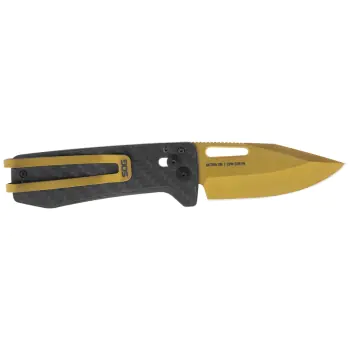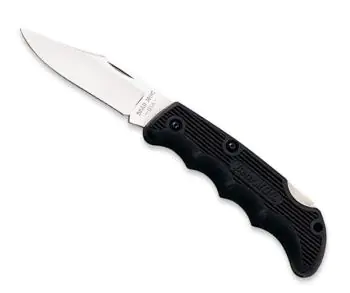A Comprehensive Guide
When it comes to choosing a knife, the blade often gets all the attention, but the handle is just as crucial. The handle material affects not only the knife’s aesthetics but also its functionality, durability, and comfort. Let’s dive into the fascinating world of knife handle materials, exploring their unique characteristics and why they might be the perfect fit for your needs.

Wood: The Timeless Classic
Wooden handles are the epitome of tradition and craftsmanship. They offer a warm, natural feel that many people find appealing. Woods like walnut, rosewood, and ebony are commonly used, each bringing its unique grain pattern and color to the table.
However, wood can be tricky. It’s sensitive to moisture and can warp or crack if not properly cared for. Stabilized wood, which is impregnated with resins, solves this problem, providing the beauty of natural wood with added durability and moisture resistance.

Micarta: The Rugged Performer
Micarta is a composite material made from layers of fabric or paper impregnated with resin. It’s known for its ruggedness and versatility. The material is resistant to water, heat, and chemicals, making it ideal for heavy-duty use.
What sets Micarta apart is its texture. Depending on the fabric used, it can have a smooth finish or a more textured, grippy surface. This variability in texture offers knife makers a lot of creative freedom in design.

G-10: The Modern Marvel
G-10 is a type of fiberglass laminate, similar to Micarta but generally tougher and more durable. It’s made by compressing layers of fiberglass cloth soaked in epoxy resin under high pressure.
G-10 handles are incredibly strong, lightweight, and resistant to moisture, chemicals, and extreme temperatures. They often come in vibrant colors and patterns, allowing for a high degree of customization. Its toughness makes it a popular choice for tactical and survival knives.

Carbon Fiber: The High-Tech Choice
Carbon fiber is the epitome of modern engineering, known for its exceptional strength-to-weight ratio. It’s made from strands of carbon that are woven together and then set in resin.
This material is incredibly strong and lightweight, making it ideal for high-performance knives. Its sleek, high-tech appearance is a bonus, giving knives a modern, futuristic look. However, carbon fiber can be quite expensive, reflecting its premium status.

Stainless Steel: The Indestructible
Stainless steel handles are all about durability and low maintenance. They are resistant to rust, stains, and wear, making them incredibly practical for everyday use.
However, stainless steel handles can be slippery, especially when wet, and they tend to be heavier than other materials. To counteract the slipperiness, many stainless steel handles have texturing or rubber inserts to improve grip.

Titanium: The Premium Pick
Titanium handles offer a combination of strength, corrosion resistance, and lightweight properties. This metal is not only incredibly durable but also hypoallergenic, making it suitable for people with metal sensitivities.
Titanium handles often have a sleek, modern look, and can be anodized in various colors for a unique appearance. The downside? Titanium is expensive, which is reflected in the price of the knives that feature it.

Bone and Antler: The Natural Beauties
Bone and antler handles bring a rustic, natural charm to knives. They have been used for centuries and are prized for their aesthetic appeal and unique textures.
Each bone or antler handle is unique, with natural variations that make every knife one-of-a-kind. They can be polished to a smooth finish or left with their natural texture. However, they can be brittle and are not as durable as some synthetic materials.

Rubber and Thermoplastics: The Practical Options
Rubber and thermoplastic handles, such as Kraton and Zytel, are all about practicality. These materials are durable, resistant to moisture, and provide excellent grip, even in wet conditions.
They are often used in knives designed for outdoor and tactical use, where a secure grip is crucial. While they may not have the aesthetic appeal of wood or carbon fiber, their functionality makes them a popular choice for many knife users.
Conclusion: Choosing the Right Handle
Selecting the right knife handle material is a balance between aesthetics, functionality, and personal preference. Whether you prefer the traditional appeal of wood, the high-tech performance of carbon fiber, or the rugged durability of G-10, there’s a handle material out there that’s perfect for you.
In the end, the best handle material is one that feels right in your hand and suits the tasks you have in mind for your knife. So, take your time, explore the options, and find a handle that makes your knife not just a tool, but an extension of yourself.
